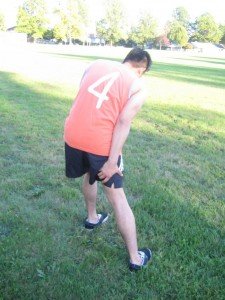Heat or cold are the commonly used non-invasive and non-addictive measures for pain relief due to muscle and joint pain. The type that is used usually depends if the pain is new or recurring.
Essentially, new injuries can trigger inflammation and possibly swelling. The application of ice reduces the flow of blood to the injury, thus minimizing the swelling and inflammation. When it comes to recurrent pain, heat is used to bring blood to the area and promote the healing process.
Heat therapy for injuries

Heat works by opening up the blood vessels which encourages blood flow and supplies oxygen and essential nutrients to reduce the pain in the joints as well as relax sore ligaments, muscles and tendons.
The warmth it provides also reduces the muscle spasms as well as improve the range of motion. The application of superficial heat can also improve the flexibility of the ligaments and tendons as well as reduce muscle spasms and pain.
How to properly use a heat pack
The sources of heat can provide either moist or dry warmth. The sources of dry heat can dry out the skin while moist heat is able to penetrate better.
Heat can be used using a microwavable heat pad, gel packs, hot water baths or hot water bottles. Remember that the heat must be warm and maintained at a consistent temperature if possible. A doctor should be consulted regarding the suitable source of heat to use.
Safety considerations
When using a heat pack for injuries, make sure that it is wrapped with a towel or cloth. Other tips to bear in mind include the following:
- Avoid applying heat longer than 20 minutes unless instructed by a doctor.
- Do not use heat on swelling. Remember to use cold first and then heat.
- Avoid using heat if the individual has poor circulation or diabetes
- Do not use heat on stitches or open wounds.
- Avoid lying down on a heating pad.
Cold therapy for injuries
When a cold pack is used for injuries, it works by slowing down the flow of blood to the site, thus reducing the swelling and pain. It also works by slowing down the circulation and reducing the pain, inflammation and muscle spasms. Remember that it is ideally used if an area is bruised or swollen.
When should I use a cold pack?
It should be used 24-48 hours after an injury. Cold therapy is suitable for strains, sprains, bumps and bruises during sports. The application of the pack should not last more than 20 minutes at a time and must be removed for 10 minutes and reapplied again.
Safety considerations
- A cold pack should not be applied longer than 20 minutes.
- The pack should be wrapped using a clean towel or cloth before application.
Disclaimer / More Information
The information posted on this page on how to use heat or cold for injuries is for learning and educational purposes only. To learn to properly use heat or cold for injuries, register for first aid training at one of our training centers located throughout Canada. The training centers are located in Edmonton, Calgary, Vancouver, Kelowna, Surrey, Saskatoon, Winnipeg, Toronto, Ottawa and Halifax.
